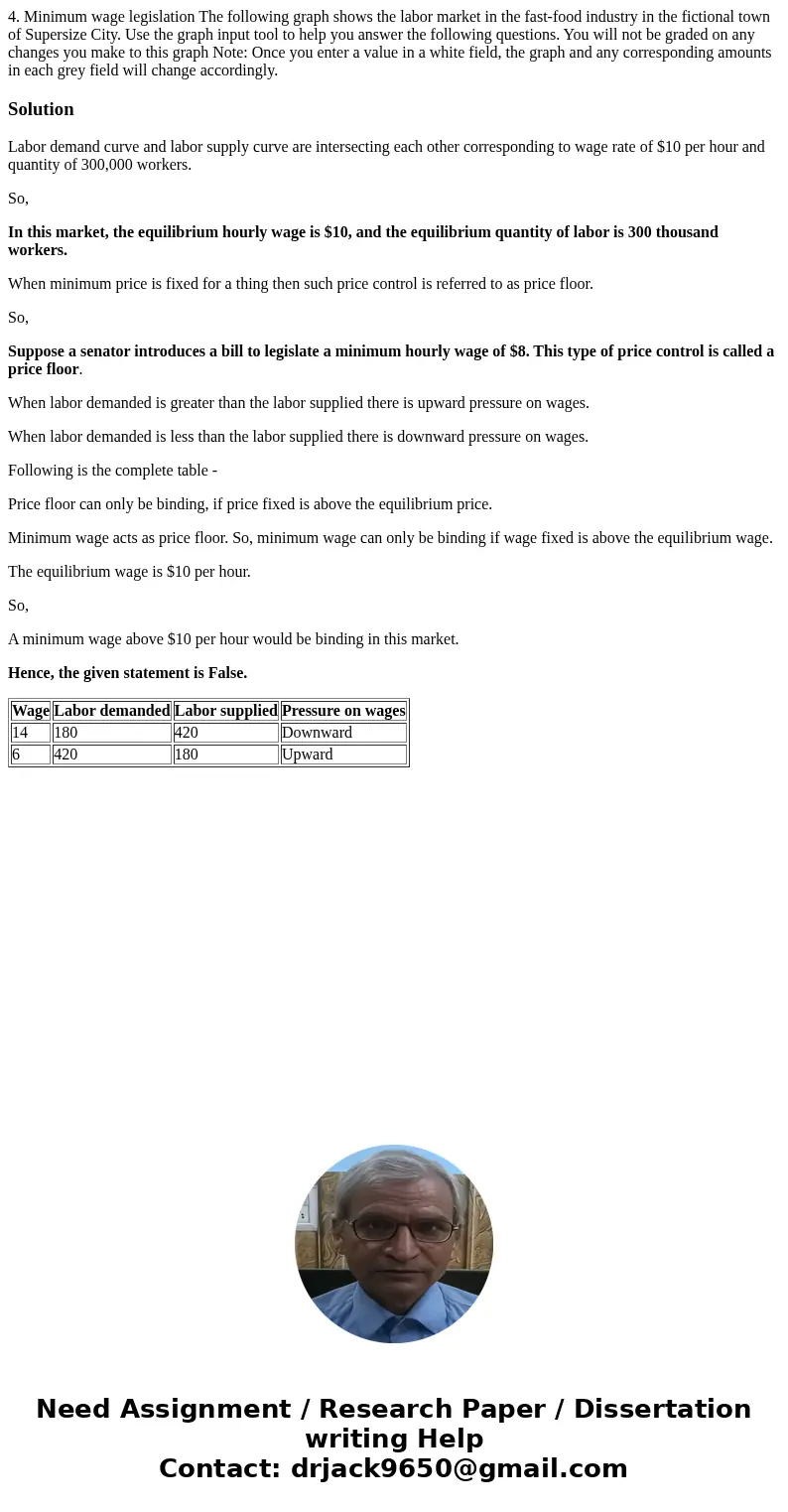4 Minimum wage legislation The following graph shows the lab
Solution
Labor demand curve and labor supply curve are intersecting each other corresponding to wage rate of $10 per hour and quantity of 300,000 workers.
So,
In this market, the equilibrium hourly wage is $10, and the equilibrium quantity of labor is 300 thousand workers.
When minimum price is fixed for a thing then such price control is referred to as price floor.
So,
Suppose a senator introduces a bill to legislate a minimum hourly wage of $8. This type of price control is called a price floor.
When labor demanded is greater than the labor supplied there is upward pressure on wages.
When labor demanded is less than the labor supplied there is downward pressure on wages.
Following is the complete table -
Price floor can only be binding, if price fixed is above the equilibrium price.
Minimum wage acts as price floor. So, minimum wage can only be binding if wage fixed is above the equilibrium wage.
The equilibrium wage is $10 per hour.
So,
A minimum wage above $10 per hour would be binding in this market.
Hence, the given statement is False.
| Wage | Labor demanded | Labor supplied | Pressure on wages |
| 14 | 180 | 420 | Downward |
| 6 | 420 | 180 | Upward |

 Homework Sourse
Homework Sourse